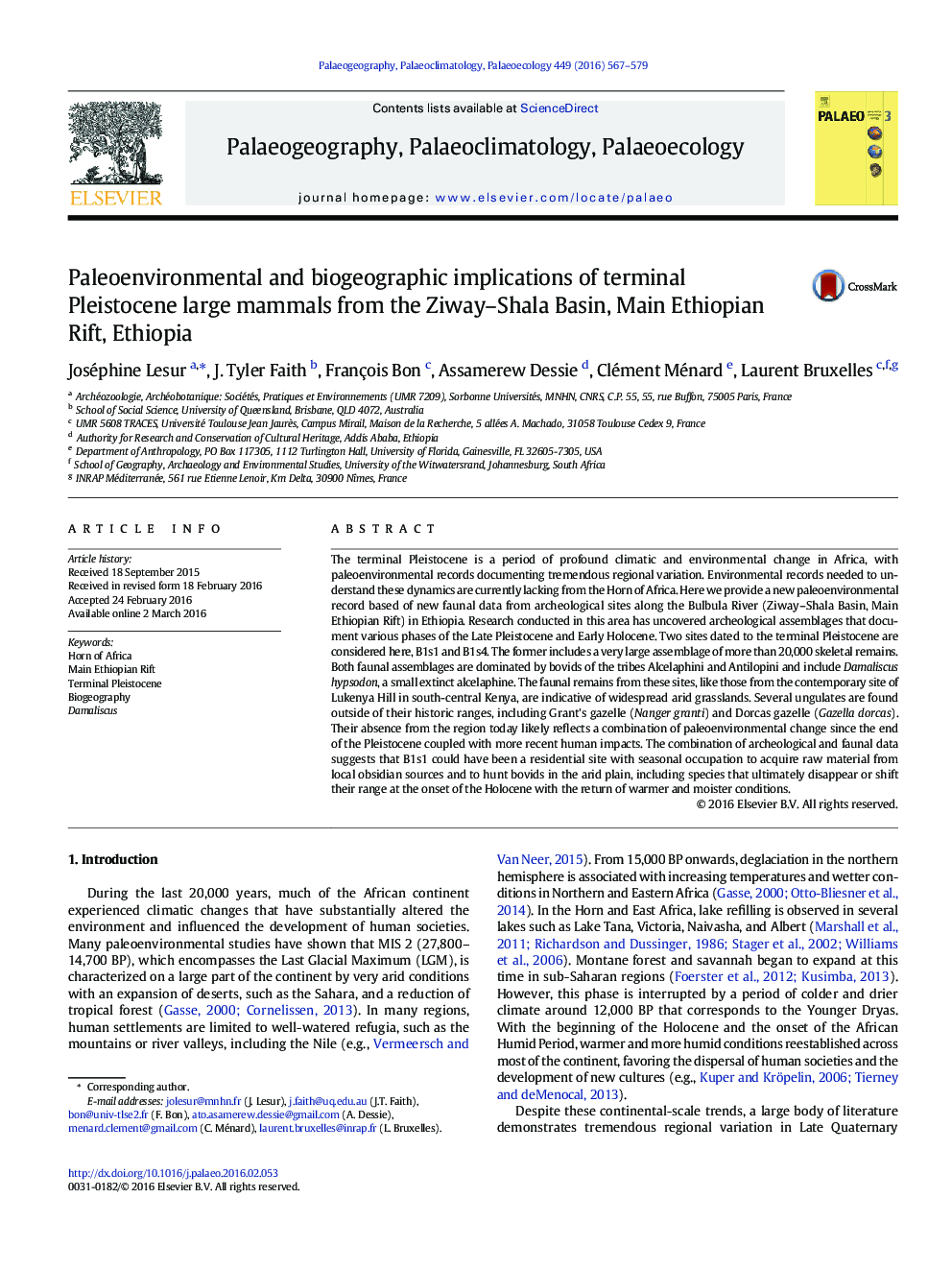| کد مقاله | کد نشریه | سال انتشار | مقاله انگلیسی | نسخه تمام متن |
|---|---|---|---|---|
| 4465787 | 1622142 | 2016 | 13 صفحه PDF | دانلود رایگان |

• Faunas from B1s1 and B1s4 document paleoenvironments during the terminal Pleistocene.
• Faunal assemblages are dominated by bovids of the tribes Alcelaphini and Antilopini.
• Fauna includes Damaliscus hypsodon, a small extinct alcelaphine.
• B1s1 and B1s4 faunal remains are indicative of widespread arid grasslands.
• Arid-adapted species disappear or shift their range at the onset of the Holocene.
The terminal Pleistocene is a period of profound climatic and environmental change in Africa, with paleoenvironmental records documenting tremendous regional variation. Environmental records needed to understand these dynamics are currently lacking from the Horn of Africa. Here we provide a new paleoenvironmental record based of new faunal data from archeological sites along the Bulbula River (Ziway–Shala Basin, Main Ethiopian Rift) in Ethiopia. Research conducted in this area has uncovered archeological assemblages that document various phases of the Late Pleistocene and Early Holocene. Two sites dated to the terminal Pleistocene are considered here, B1s1 and B1s4. The former includes a very large assemblage of more than 20,000 skeletal remains. Both faunal assemblages are dominated by bovids of the tribes Alcelaphini and Antilopini and include Damaliscus hypsodon, a small extinct alcelaphine. The faunal remains from these sites, like those from the contemporary site of Lukenya Hill in south-central Kenya, are indicative of widespread arid grasslands. Several ungulates are found outside of their historic ranges, including Grant's gazelle (Nanger granti) and Dorcas gazelle (Gazella dorcas). Their absence from the region today likely reflects a combination of paleoenvironmental change since the end of the Pleistocene coupled with more recent human impacts. The combination of archeological and faunal data suggests that B1s1 could have been a residential site with seasonal occupation to acquire raw material from local obsidian sources and to hunt bovids in the arid plain, including species that ultimately disappear or shift their range at the onset of the Holocene with the return of warmer and moister conditions.
Journal: Palaeogeography, Palaeoclimatology, Palaeoecology - Volume 449, 1 May 2016, Pages 567–579